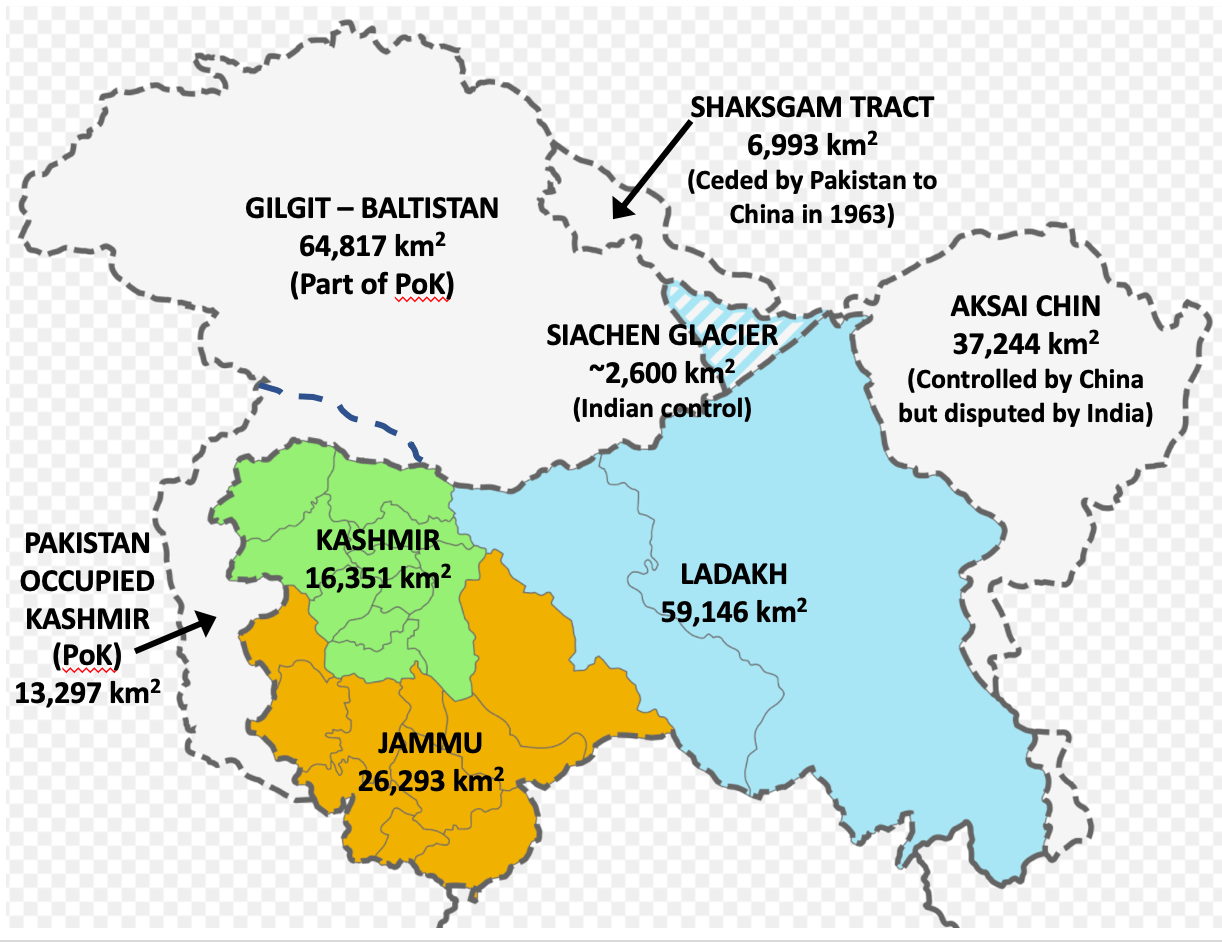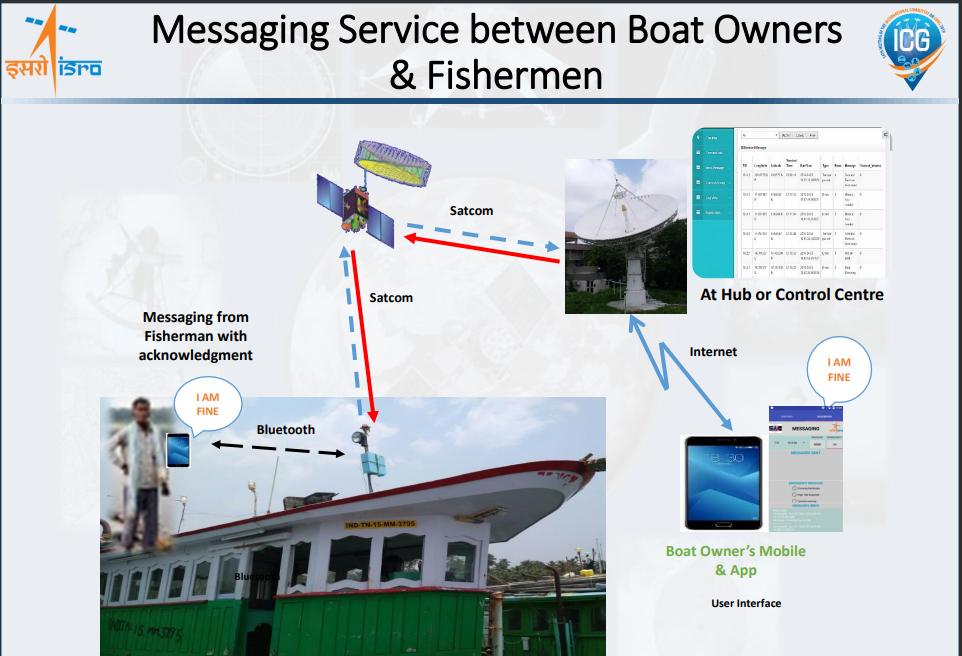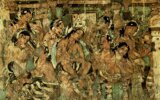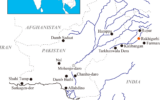
Current Affairs for UPSC Civil Services Exam – May 19-20, 2024
Subscribers of "Current Affairs" course can Download Daily Current Affairs in PDF/DOC
Subscribe to Never Miss an Important Update! Assured Discounts on New Products!
Must Join PMF IAS Telegram Channel & PMF IAS History Telegram Channel
{GS1 – A&C – Art} Megaliths & Megalithic Culture *
- Context (TH): A stone carving of a snake from the megalithic period was found at Puthukkai village in Kasaragod.

Credit: The Hindu
Megalith
- It is a larger stone constructed either as burial sites or commemorative memorials.
- These types of structures were predominantly constructed during the Neolithic period and persisted through the Chalcolithic Age, Bronze Age, and Iron Age.

Credit: Livemint
Megalithic culture
- In India, they mainly belong to the Iron Age (1500 BC–500 BC), with some exceptions, such as Chalcolithic-Megalithic sites. Whereas, South India’s megalithic culture had a much larger chronological span.
- The megalithic people constructed elaborate tombs. They furnished them with essential objects. They thought this practice to be necessary as they believed in the afterlife of the dead.
- Their economy was based on agriculture. The megalithic people introduced tank irrigation in south India and thus brought a revolutionary change in the agricultural system.
- Iron objects have been found universally in all the megalithic sites.
{GS2 – Governance – Laws} Digital Competition Bill **
- Context (IE): India’s proposed digital competition law aims to stop tech giants from self-preferencing or using data from one company to benefit another.
- The proposed law is inspired by the European regulatory model.
- It is designed to prevent anti-competitive practices, ensure transparency, and curb unfair favouritism in the digital sector.
- The Bill was drafted by a 16-member committee on digital competition law after a year of deliberation.
Key Observations and Recommendations of the Committee
Need for ex-ante regulation of Digital Competition
- The ex-post framework (intervening after an event occurs) under the Competition Act of 2002 fails to promptly address anti-competitive conduct, highlighting the need for new legislation.
- The present framework may not be effective in addressing the irreversible tipping of markets in favour of large digital enterprises.
Irreversible tipping of markets
|
- The Committee recommends the Digital Competition Act, which would empower the Competition Commission of India (CCI) to regulate large digital enterprises ex-ante (intervening before an event occurs), ensuring fair competition.
- The proposed legislation should regulate only those enterprises that have a significant presence and the ability to influence the Indian digital market.
Systemically Significant Digital Enterprises (SSDEs)
- Certain features of digital markets enable enterprises to gain influence quickly, this includes:
- Collection of user data, which can allow large incumbent enterprises to enter related markets;
- Network effects, where the utility of a service increases when the number of users consuming the service increases, and
- Economies of scale, wherein incumbents can offer digital services at lower costs as compared to new entrants.
- The Committee recommended designating entities offering certain core digital services as SSDEs for ex-ante regulation, as these services are susceptible to market concentration.
- These include search engines, social networking services, operating systems, and web browsers.
Thresholds for Classification of SSDEs
- The Committee recommended using both quantitative thresholds and qualitative criteria to designate enterprises as SSDEs.
The Quantitative threshold
- It can be based on a dual test of:
- Significant financial strength, gauged from parameters such as turnover, gross merchandise value, and market capitalisation and
- Significant spread based on the number of business and end users of the core digital service in India.
- Digital enterprises fulfilling the quantitative thresholds would have to report the same to CCI, which will then designate them as SSDEs.
- The quantitative threshold may not cover all digital enterprises that may have a significant presence in Indian digital markets.
- The Committee recommended that a set of qualitative criteria may be used to designate such enterprises as SSDEs.
- These criteria include the resources of the enterprise and the volume of data aggregated by them.
Associate Digital Enterprises (ADEs)
- In some cases, compliance may be required from multiple digital enterprises in a group that is engaged in providing a core digital service.
- The Committee recommended that notifying enterprises should identify all other enterprises within its group involved in the provision of a core digital service.
- These enterprises should be designated as ADEs under the proposed framework.
Obligations of SSDEs
- The Committee recommends prohibiting SSDEs from carrying out certain practices. These include
- Favouring their own products and services or those of related parties,
- Using non-public data of business users operating on their core digital service to compete with those users,
- Restricting users from using third-party applications on their core digital services and
- Requiring or incentivising users of an identified core digital service to use other products or services offered by the SSDE.
- Regulations may allow differential obligations for different SSDEs and ADEs based on factors like business models and user base.
Enforcement of provisions
- The Bill empowers the Director General, appointed under the 2002 Act, to investigate any contraventions when directed by the CCI.
- The Committee recommended that CCI should bolster its technical capacity including within the Director General’s office for early detection and disposal of cases.
- It also recommended constituting a separate bench of the National Company Law Appellate Tribunal for the timely disposal of appeals.
Penalties
- The 2002 Act provides for behavioural remedies and high monetary penalties to address anti-competitive practices.
- The GOI has decriminalised various corporate offences to promote ease of doing business.
- It recommended that contraventions under draft Bill should be addressed by imposing civil penalties.
- It recommended capping the penalty at 10% of the global turnover of SSDEs.
Digital Competition Bill
- It specifically prohibits these companies from unfairly favouring their own products or those of related parties.
- It restricts the misuse of business users’ non-public data.
- These regulations will apply alongside compliance with the existing Competition Act and the Digital Personal Data Protection Act.
Key Provisions
Predictive Regulation
- Proposes a preventive (ex-ante) approach instead of the current post-incident (ex-post) regulation.
- It aims to foresee and prevent potential anti-competitive practices before they occur.
Significant Entities
- The Bill proposes this for certain “core digital services” like search engines, and social media sites.
- The CCI will designate “Systematically Significant Digital Enterprises” (SSDE), on various quantitative and qualitative parameters.
- Criteria include, in the last 3 financial years,
- Turnover over Rs 4,000 crore in India,
- Global turnover over $30 billion,
- Gross merchandise value in India over Rs 16,000 crore, or
- Global market capitalisation over $75 billion.
- SSDEs must have at least 1 crore end users or 10,000 business users.
Prohibited Practices
- SSDEs cannot engage in self-preferencing, anti-steering, or restricting third-party applications.
- Violations can result in fines of up to 10% of global turnover.
Associate Digital Enterprises (ADEs)
- Entities benefiting from data shared by a major tech group will be designated as ADEs.
- ADEs will have the same obligations as SSDEs.
Need for the Digital Competition Law
- Big tech companies have a history of anti-competitive behaviour.
- For instance, Google was fined Rs 1.337 crore for its conduct in the Android ecosystem.
- The dominance of a few companies creates high barriers for new entrants, limiting innovation within big tech firms.
- The bill aims to foster competition, which can lead to more innovation outside the big tech companies.
- The bill aims to level the playing field for smaller businesses struggling against big tech’s market dominance.
Benefits of the Digital Competition Bill
- Increases Transparency: Requires tech companies to be more transparent in their operations and dealings.
- Protects Innovators and Startups: Exempts smaller companies and startups from stringent rules, encouraging innovation.
- Aligns with Global Standards: Follows a similar approach to the EU’s Digital Markets Act, showing an effort to align with international regulatory frameworks.
- Boosts Digital Economy: By effectively regulating, it supports the growth of India’s digital market, which is expected to reach $800 billion by 2030.
Concerns with the bill
- Stifling Innovation: There’s a worry that strict regulations could limit creativity and growth in the tech sector.
- Too Much Power to Regulators: The Bill’s ex-ante approach may give regulators excessive discretionary power, raising concerns about potential misuse.
- Duplication with Existing Laws: It might overlap with provisions in the current Competition Act, leading to regulatory complexity and potential confusion.
- Potential for Conflicting Decisions: This overlap could result in parallel inquiries and divergent rulings for the same issue under different laws.
{GS2 – IR – NA} USA’s Generalised System of Preferences (GSP) *
- Context (TH): The U.S. Generalised System of Preferences (GSP) programme expired in 2020.
What is a Generalised System of Preferences (GSP)
- It is a term in international trade used by most developed countries.
- It offers lower tariffs to developing countries as incentives for economic reform. However, these programmes are constructed in such a way that they do not harm their domestic production.
- Each developed country has its own customised GSP programme.
Benefits
For the developing countries
- It helps access global trade, especially for small businesses and women-owned enterprises.
- It provides advantages to suppliers in trusted developing markets.
- It promotes labour reforms, environmental sustainability, and intellectual property rights.
For the U.S
- It reduces tariff bills, many of which are small- and medium-sized enterprises.
- It is useful for friendshoring and nearshoring new supply chains.
- It offers alternatives to Chinese imports.
|
Importance of GSP in U.S.-India Trade
- Renewing GSP can elevate the bilateral trade relationship beyond $200 billion.
- A strong, enforceable trade agreement would provide stability in regulatory certainty and ease of doing business. This will boost private investments from both countries in critical and emerging technologies, including smartphone manufacturing and semiconductor production.
{GS2 – Social Sector – Health – Issues} Calcium Carbide
- Context (TH | PIB): FSSAI has asked traders and food business operators not to use the banned product ‘calcium carbide’ for the ripening of fruits.
- The use of calcium carbide for ripening fruits has been banned under Regulation 2.3.5 of the Food Safety and Standards (Prohibition and Restrictions on Sales) Regulations, 2011.
- Calcium carbide is a chemical used to ripen fruits artificially. It is also used to keep the fruits fresh, which makes the fruit available all throughout the year, not just during the season.
- It is mixed with water and releases acetylene gas (commonly known as carbide gas) which helps to ripen the fruit. It is very similar to ethylene, which is a natural hormone produced by fruits. Several ripe fruits also release this gas and hence, certain fruits tend to ripen quickly when kept with other fruits.
- Known as ‘Masala’, these substances can cause dizziness, frequent thirst, irritation, weakness, difficulty in swallowing, vomiting, and skin ulcers. Acetylene gas is also hazardous to handlers, and residues of arsenic and phosphorus may remain on fruits.
Harmful effects of Calcium Carbide
- Inhaling calcium carbide can lead to respiratory issues, including coughing, shortness of breath and throat irritation.
- Inhaling acetylene gas can lead to dizziness and headaches. Also, high concentration can cause unconsciousness.
- Calcium carbide has impure compounds like arsenic and phosphorus hydride. These can have carcinogenic effects due to long-term exposure, increasing the risk of developing cancer.
Safer alternative for ripening
- FSSAI permits the use of ethylene gas as a safer alternative for fruit ripening. Ethylene gas is a natural hormone that regulates ripening. It triggers the natural ripening process until the fruit produces ethylene in substantial quantities.
- The Central Insecticides Board and Registration Committee (CIB & RC) has approved Ethephon 39 per cent SL for uniform ripening of mangoes and other fruits.
{GS3 – Envi – Species} Chir Pine (Pinus Roxburghii)
- Context (TH): The Pine needle power projects to check Uttarakhand forest fires proved to be inadequate.
- Chirpine is a large evergreen tree with an elongated crown and forms a straight cylindrical bole.
- Distribution: Its native range extends from Tibet and Afghanistan through Pakistan, across northern India, Nepal and Bhutan, to Myanmar.
- It grows between a lower elevation of 500 metres to a higher elevation of 2,200 metres and forms a pure forest.
- The Chir Pine is well-adapted to the Montane Temperate Forests of the Himalayas.
- Conservation status: IUCN: Least Concern

Credit: Exotic flora
Uses
- The timber part of the tree is largely used for various purposes, such as house building, furniture, tea chests, and musical instruments.
- Chirpine oleoresin yields:
- Turpentine oil: It is used in the preparation of paints and varnishes, polishes, chemicals and pharmaceuticals. It is also used for dissolving fats, and resin and for domestic purposes.
- Rosin: Rosin is extensively used in soap, paper, paints and varnishes, pinoleums, sealing waxes, oil cloth, inks and disinfectants.
- Its cones are used for decorative and handicraft purposes.
- The bark of the tree doesn’t catch fire easily since it has a very high ignition temperature. Hence, the blacksmiths use the bark of the chir pine in furnaces to melt metal.
Concerns associated with Chir Pine
- Pine needles are highly inflammable and are one of the main causes of forest fires.
- It prevents regeneration of undergrowth on the forest floor as it makes the soil more acidic through its fallen needles
- It contributes to soil erosion due to its shallow roots.
Pine needle power projects
- Announced in 2021, it aimed at establishing power projects that would use the pine needles as fuel to generate electricity.
- It aimed at establishing multiple units ranging from 10kW to 250 kW across the State in three phases (worth about 150 MW).
- Nodal agency: Uttarakhand Renewable Energy Development Agency (UREDA)
- Though the government expected 58 units to be set up, only six units of 250 kW (totally worth 750 kW) have been established.
- Potential of Chir pine: Of Uttarakhand’s total forest area, 16.36% is covered by Chir pine forests. As per estimates, over 15 lakh tonnes of pine leaves are annually generated. 40% of the estimated quantity available, coupled with other agricultural residue, could significantly aid the State’s power requirements.
{GS3 – IE – RBI} Regulatory Norms to Gold Loan Lenders
- Context (TH): The RBI recently instructed gold loan lenders to adhere strictly to regulatory norms.
Reason
- The RBI increased scrutiny of Non-Banking Financial Companies (NBFCs) after discovering regulatory violations. For e.g., in March, the RBI banned IIFL Finance from issuing new gold loans.
- Aggressive Lending: NBFCs’ gold loan portfolio grew from ₹35,000 crore in FY 2020 to ₹1,31,000 crore in FY 2023.
RBI’s Gold Loan Norms
- Loan-to-Value Ratio: Lenders cannot lend more than 75% of the gold’s value used as collateral. This ensures banks can cover losses by selling the gold if the borrower defaults.
- Cash Limit: Only up to ₹20,000 can be given in cash. Amounts above ₹20,000 must be deposited in the borrower’s bank account to comply with income tax rules.
- Auction Guidelines: If the borrower defaults, lenders must auction the gold in a fair, transparent manner and accessible locations.
Possible Impacts of RBI’s decision
- Scrutiny may affect NBFCs’ growth and profitability.
- Limiting cash disbursement to ₹20,000 may reduce the attractiveness of NBFC gold loans.
- NBFCs’ ability to offer emergency cash might be affected.
- Loans for those outside the banking system may be impacted.
- Making auctions transparent may increase operating costs, leading to higher borrowing rates for lenders.
|
{GS3 – S&T – Space} Red Dwarf Stars & SPECULOOS *
- Context (TOI): Astronomers discovered an Earth-size planet. It orbits an ultracool red dwarf star.
- The discovery was made by the Search for Habitable Planets Eclipsing Ultra-cool Stars (SPECULOOS) team. The planet is named SPECULOOS-3b.
About Red dwarf star
- They are the smallest type of hydrogen-burning star.
- Objects smaller than red dwarf stars are called brown dwarfs and do not shine.
- It makes up about 70% of all stars in the Milky Way.
- They have incredibly long lifespans because they consume nuclear fuel slowly.
- Studies suggest life could develop on planets around red dwarfs. This makes them interesting targets for studying planetary evolution and habitability.
About SPECULOOS
- It was designed specifically to explore nearby ultra-cool dwarf stars in search of rocky planets.
- The project is based on a network of 1m robotic telescopes composed of:
- Four telescopes at the SPECULOOS-Southern Observatory (SSO) in Cerro Paranal, Chile.
- One telescope at the SPECULOOS-Northern Observatory (SNO) in Tenerife, Spain.
- The SAINTEx telescope in San Pedro Martir, Mexico.
- The European Southern Observatory supports and hosts the SPECULOOS Southern Observatory.
{GS3 – S&T – Space} Stellar Nucleosynthesis *
Stellar nucleosynthesis
- It is the creation of chemical elements by nuclear fusion reactions within stars.
- The only element not formed in this way is hydrogen. It was formed in the aftermath of the Big Bang.
- Star cores have extremely high pressures and temperatures. In these conditions, atomic nuclei undergo nuclear fusion. For e.g., the Sun’s core temperature is about 15 million degrees Celsius.
- The hydrogen nucleus is a single proton. In the core, these protons fuse to form helium nuclei (two protons and two neutrons). This is called the proton-proton (p-p) process.
- In more massive stars, nucleosynthesis follows the carbon-nitrogen-oxygen (CNO) cycle.
- In the CNO cycle, carbon, nitrogen, and oxygen nuclei fuse to form elements from helium onwards.
- When a star runs out of nuclei to fuse, its core contracts, increasing its temperature. This triggers nuclear fusion again, continuing until the star produces iron.
- Iron fusion consumes more energy than it releases.
- Elements heavier than iron are synthesised when a star goes supernova.
{Prelims – Envi – Species} Orcas (Orcinus orca)
- Context (IE): A group of orcas sank a 15-metre-long sailing yacht in the Strait of Gibraltar.

- Often referred to as wolves of the sea, the killer whale, also known as orca, is the ocean’s top predator.
- It is the largest member of the Delphinidae family or dolphins. Known for their intelligence, orcas are highly skilled hunters and can coordinate tactics during hunts.
- They are fast swimmers, reaching speeds up to 54 km per hour.
- Distribution: Found in every ocean in the world, they are the most widely distributed of all cetaceans (whales and dolphins). They are found in both open seas and coastal waters.
- Physical description: They have a large black body, a white underside, a white patch above and behind the eye, ‘saddle patch’ behind the dorsal fin.
- Conservation Status: IUCN: Data Deficient

Credit: One Green Planet
{Prelims – Envi – Species} Sea Otters *
- Context (TH): Sea otters use rocks, shells, and discarded bottles as hammers or anvils to smash open hard-shelled prey. Their prey includes sea urchins, abalone, crabs, mussels, clams, & snails.
- Tool use allows otters to access otherwise inaccessible prey and maintain their energy requirements.
Use of tools by other animals
|
About Sea Otters

Credit: National Geographic
- They are water mammals found along the coasts of the Pacific Ocean in North America and Asia.
- Unlike other marine mammals, they have no blubber to protect them from hypothermia.
- Sea otters are key players in the health of the kelp forests they inhabit.
- IUCN Status: Endangered.
- Threats: Oil spills and run-off from the land containing chemicals and disease-causing organisms.
{Prelims – In News} Bacterial Pathogens Priority List (BPPL)
- The updates are the first since the WHO released its initial Bacterial Priority Pathogens List (BPPL) in 2017.
- Objective: It aims to guide prioritising research and development and investments in antimicrobial resistance.
- Significance: WHO officials have used it to assess the antibiotic pipeline and to guide AMR surveillance efforts and infection prevention and control strategies worldwide.
- The list features 15 families of antibiotic-resistant bacteria grouped into critical, high and medium categories for prioritisation.
- Critical Priority: These pose the most significant threat and include:
- Gram-negative bacteria (e.g., Acinetobacter baumannii) which can easily develop resistance and spread it to others.
- Mycobacterium tuberculosis resistant to the antibiotic rifampicin, a concern for tuberculosis treatment.
- High Priority: These pathogens pose major challenges, especially in healthcare settings, such as:
- Vancomycin-resistant Enterococcus faecium, a hospital-acquired infection.
- Methicillin-resistant Staphylococcus aureus (MRSA), a common antibiotic-resistant infection.
- Medium Priority: These pathogens cause a high disease burden and require attention, particularly in vulnerable populations. New additions to the 2024 list include Group A and B Streptococci.
- Critical Priority: These pose the most significant threat and include:
{Prelims – In News} River Nile’s Old Branch
- Context (IE): A new study suggests that the River Nile played a crucial role in making pyramid construction possible.
About the findings
- Most of Egypt’s pyramids are located in a 50 km stretch between Giza and the village of Lisht.
- While it was suspected that the river might have been closer to the pyramids in ancient times, conclusive evidence was lacking until now.
- A study published in Communications Earth and Environment identified segments of an extinct branch of the Nile near the pyramids. This branch, i.e. Ahramat, was very close to the pyramids in ancient times.
- Locating this ancient river branch provides evidence that it could have been used to transport heavy materials for pyramid construction.
- Researchers suggest that the river’s energy was used to transport heavy blocks. This also explains why there’s a high density of pyramids between Giza and Lisht in the Sahara desert.

Credit: Nature
Nile River
|
{Prelims – In News} Tendu Leaves
- Context (TOI): Leopard kills tendu leaf plucker in Maharashtra.
- Tendu or Kendu leaves are obtained from the Tendu tree (Diospyros melanoxylon Roxb.), which is endemic to the Indian subcontinent. It is a minor forest produce.
- Kendu leaf is called the green gold of Odisha. It is a nationalised product like bamboo and sal seed.
- The leaves of Tendu are used for wrapping bidi (Indian smoking tobacco).
- Due to its unique characteristics, viz. matching aroma with Tobacco, hygroscopic nature of dry leaves to withstand crack, thinness, gradual combustion, resistance to fungus attack, etc. tendu leaves are used for wrapping Bidis.
- Madhya Pradesh is the largest tendu leaves producing State of India.
{Prelims – Sci – Bio – Diseases} Parkinson’s Disease
- Context (TH): A recent study found that balancing two forms of Synuclein alpha (SNCA) protein could help manage Parkinson’s disease.
- Synuclein alpha (SNCA) is known for its involvement in age-related neurodegenerative diseases.
- SNCA is abundant in neurons, especially in dopaminergic neurons.
- It is found near the nuclei of these cells and at the junctions between two neurons. It’s capable of misfolding as well as forming filamentous structures.
- SNCA is present in two ways as aggregates in cells: one that interferes with the structural integrity of cells’ nuclei and another that allows the cell to degrade misfolded proteins. The researchers found that the former are related to diseased states while the latter is important for healthy cells.
- Striking a balance between the two SNCA populations to manage Parkinson’s disease. Parkinson’s disease researchers are focused on reducing the prevalence of SNCA in neurons as a therapeutic measure.
Parkinson’s Disease
- Parkinson’s disease (PD) is a movement disorder of the nervous system that gets worse over time (it is a degenerative disease).
- People with this disease lose neurons that communicate with each other using dopamine as a neurotransmitter in a part of their brains. These dopaminergic neurons have been found to contain aggregated masses of proteins called Lewy bodies. Most of these proteins are SNCA.

Credit: Medindia
- The cause of PD is unknown, but people with a family history of the disease have a higher risk. Exposure to air pollution, pesticides and solvents may increase risk.
- The disease usually occurs in older people, but younger people can also be affected. Men are affected more often than women.
- Symptoms: Slow and involuntary movement, tremors, rigidity, dementia, sleep disorders, cognitive impairment, etc. The symptoms typically begin on one side of the body. However, the disease eventually affects both sides, although symptoms are often less severe on one side than on the other.
- Parkinson’s disease is not contagious. Currently, there is no cure for PD.







![PMF IAS Environment for UPSC 2022-23 [paperback] PMF IAS [Nov 30, 2021]…](https://pmfias.b-cdn.net/wp-content/uploads/2024/04/pmfiasenvironmentforupsc2022-23paperbackpmfiasnov302021.jpg)












